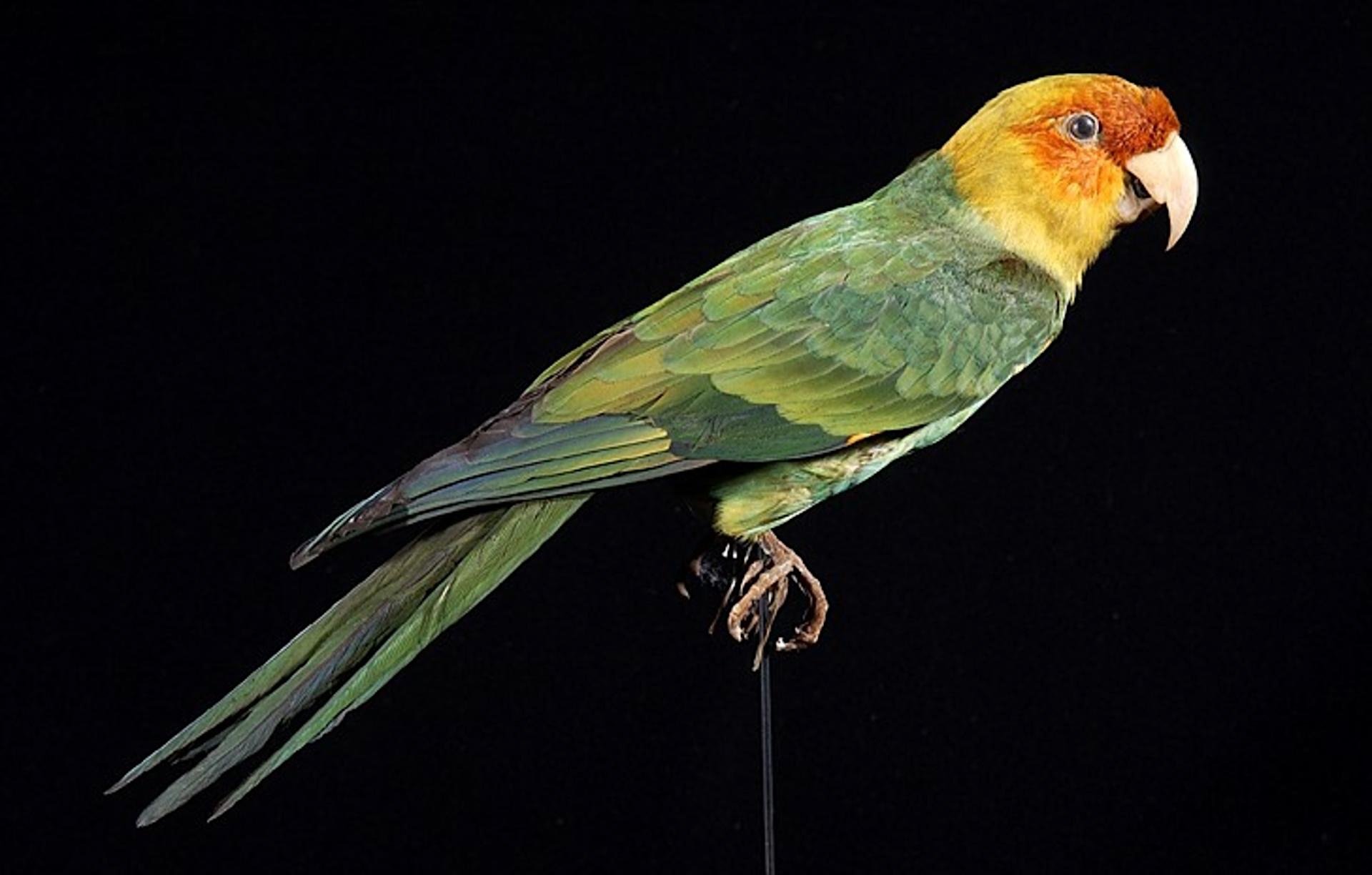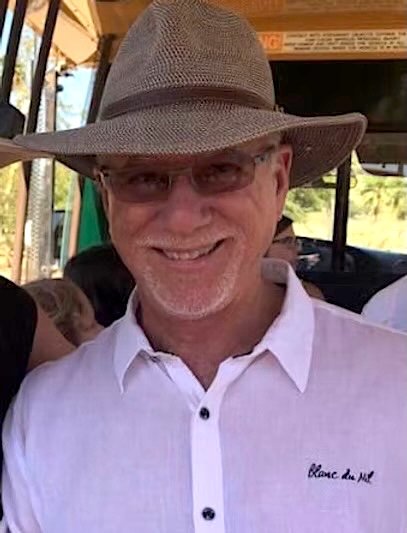HOPE IS THE THING WITH FEATHERS
The Kansas City Chorale Performs Lost Birds
By Patrick Neas, KC Arts Beat
Carolina parakeet (Declared extinct in 1939)
The great auk (The last pair, found incubating an egg, was killed on June 3, 1844)
The following work is called Migration by Hans Bridger Heruth.
“I went to college with his mother,” Bruffy said. “He's a wonderful young composer, and I had written him to see if he had anything about birds. He said, ‘No, I don't, but I'll write something.’ And this is so beautiful and we are so in love with the piece. Let me just tell you some words:
The brightest thing, the brightest thing about me is my wings, red-tipped, flashing when I fly. When I breathe, my lungs are like wings, spreading, expanding, extending with each inhale. Hold me the way you hold a child. Hold me gently. I am only here for a little while.”
Jean Belmont Ford
Colorful birds take flight in the following selections: The White Birds by Ron Kean and The Bluebird by Charles Villiers Stanford.
“Ron Kean is a teacher and composer from California,” Bruffy said. “I contacted him and asked if he had any songs about birds. And then he sent me The White Birds, and I really liked it. It's kind of a Celtic folk song that’s more about a love relationship. It compares white birds to the foam on the sea, which is such a beautiful image. I recently learned that when mermaids die, they become sea foam. I thought the mermaids just went off and married the unicorns. I'm glad they turn into foam. That's much more poetic.”
The Bluebird is by Charles Villiers Stanford, an often overlooked but wonderful Victorian-era composer. Stanford wrote many orchestral works, including seven symphonies, but he is best known for his rich choral works, many written for the Anglican church.
“In this concert, people will probably be most familiar with Stanford’s The Bluebird,” Bruffy said. One time, the Kansas City Chorale got to go to Iowa to sing at a state music convention, and Sir David Willcocks was there. He wrote me a card after our performance that it was the best Bluebird he had ever heard. I had it framed and then I gave it to our soloist. We were very proud of that.”
ron kean
Hawaiʻi ʻōʻō (When Europeans first arrived, it was still relatively common on the Big Island, but its decline followed rapidly afterwards. The last known sighting was in 1934 on the slopes of mauna loa.)
charles villiers stanford
"Edwards' Dodo", painted by Roelant Savery in 1626 (last sighted in 1662)
"It was a spring without voices. On the mornings that had once throbbed with the dawn chorus of robins, catbirds, doves, jays, wrens, and scores of other bird voices there was now no sound; only silence lay over the fields and woods and marsh.”
So wrote Rachel Carson in her environmental classic Silent Spring.
The Kansas City Chorale conducted by Charles Bruffy will celebrate those creatures who fill our lives with beautiful song and gorgeous plumage in a program called Lost Birds: An Extinction Elegy May 16 at Village Presbyterian Church.
Carson was writing about the threat of habitat loss and pesticide pollution in Silent Spring, but human activity has been a threat to avian life for centuries. Lost Birds will celebrate not only bird species that are currently under threat but those that have been lost to extinction, like the iconic dodo and the passenger pigeon.
“It is of great concern the direction our planet is going ecologically,” said Charles Bruffy, artistic director and conductor of the Kansas City Chorale. “Because there is just so much pollution, plastic islands in the ocean, fracking, so much damage that the human race has inflicted. And it’s also had an incredible impact on humans.”
male passenger pigeon (the last passenger pigeon died on September 1, 1914, at the Cincinnati Zoo.)
Bruffy lives on a farm in Raymore, Missouri, where he thoroughly enjoys watching the birds.
“It is so lovely to see all the titmice and the big breasted robins waiting to lay their eggs,” he said. “We have a lot of sparrows and several crows, and the hawks and geese are flying by overhead a lot. The formations that they make in the sky while trading leadership roles is so inspiring. But my most intimate relationship with birds would be my chickens.”
Bruffy has raised chickens for several years, but recently he experienced a poultry tragedy.
“It's kind of a gruesome story, but we started off with 12 chickens and then we had a big snow storm and the roof to the coop blew off,” Bruffy said. “We didn't know that the roof had blown off, and a varmint got in there and extinguished my chickens. So we got down to one chicken, but then, thank heavens, it was chick days at Tractor Supply. So now we have 11 baby chicks, all different kinds, and they're in a tub in the bathtub with a heat lamp.”
For Bruffy, as for any of us with a sensitivity to the natural world, the decline in bird species is alarming and heartbreaking. Thus was born the idea for Lost Birds.
“I think that the incredible feathers and incredible colors of those feathers are just so important to conserve,” Bruffy said. “We know of at least 125 different species of birds that are now extinct. Now, I don't mean to sound like I'm admonishing people, but I kind of am.”
Bruffy says Lost Birds is meant to inspire as much as admonish. He hopes the concert is not only an elegy for birds that are lost forever, but a call to action to preserve the birds that remain. And he hopes to do that with what he calls “incredibly beautiful music.”
“We are going to start with a piece called Murmuration,” Bruffy said. ”The words and the music were written by Jean Belmont Ford. It's a giant piece that is descriptive of murmuration, which is when a flock of birds makes designs and coils in the sky. It's really great. It talks about finding one's own power and one's own ability to soar. I really love that piece.”
Hans Bridger Heruth
christopher tin
The concert will conclude with the piece that gives the program its name: The Lost Birds by Christopher Tin.
“It's made of 12 different movements, all about birds that have become extinct,” Bruffy said. “One of our singers, Brian Taylor, said we should do this piece, and so now we're going to record it. It has already been recorded with Voces8. It's a very small vocal ensemble of eight voices, but they recorded it with the London Symphony. It's a giant orchestra and small chorus. We are recording it with a larger chorus, we are 26 singers, but just using a string quintet, piano, harp, and suspended cymbal.”
Bruffy describes the music as “very listenable.”
“It draws you in,” he said. “It's very expansive. It isn't descriptive of the bird, but elevates the loss of the bird. The Saddest Noise is one of my favorite movements.
Between the March and April line, that magical frontier beyond which summer hesitates, almost too heavenly near. The saddest noise, the sweetest noise, the maddest noise that grows and grows. The birds, they make it in the spring at night's delicious close. The saddest noise I know.”
The other sections of The Lost Birds are settings of poems by writers like Christina Rossetti, Edna St. Vincent Millay and Sara Teasdale. The final section is Hope is the thing with feathers. by Emily Dickinson
And do we ever need hope.
lyall’s wren (A flightless species exterminated by feral cats.)
The statistics are grim. According to recent research published in the May 2025 edition of the journal Science, 75% of North America’s bird species are on a downward spiral, with populations declining precipitously between 2007 and 2021. Various reasons are given for the decline, including human encroachment on bird habitat, pesticides and climate change, which is causing disruptions in breeding cycles.
“We have to have hope in the face of all these ecological calamities that face us every single day,” Bruffy said. “Without hope, what do we do, right?”
Bruffy isn’t just sitting around hoping, however. Through the Kansas City Chorale’s music, he wants people to ache at the loss of so many innocent beautiful creatures and fight for those that remain. In addition to his music, Bruffy is also taking a hands-on approach to caring for his feathered friends.
“When my chickens were tiny, tiny babies and it got real cold and the heat lamp went out, I put them down my shirt. At the time, I only had three. I put them down my shirt between my t-shirt and my outer shirt to keep them warm. And that's how I went to sleep. I hope they recover from the emotional scars.”
The Kansas City Chorale presents Lost Birds: An Extinction Elegy. 7.30 p.m. May 16. Village Presbyterian, 6641 Mission Road. $25-$30. www.kcchorale.org












